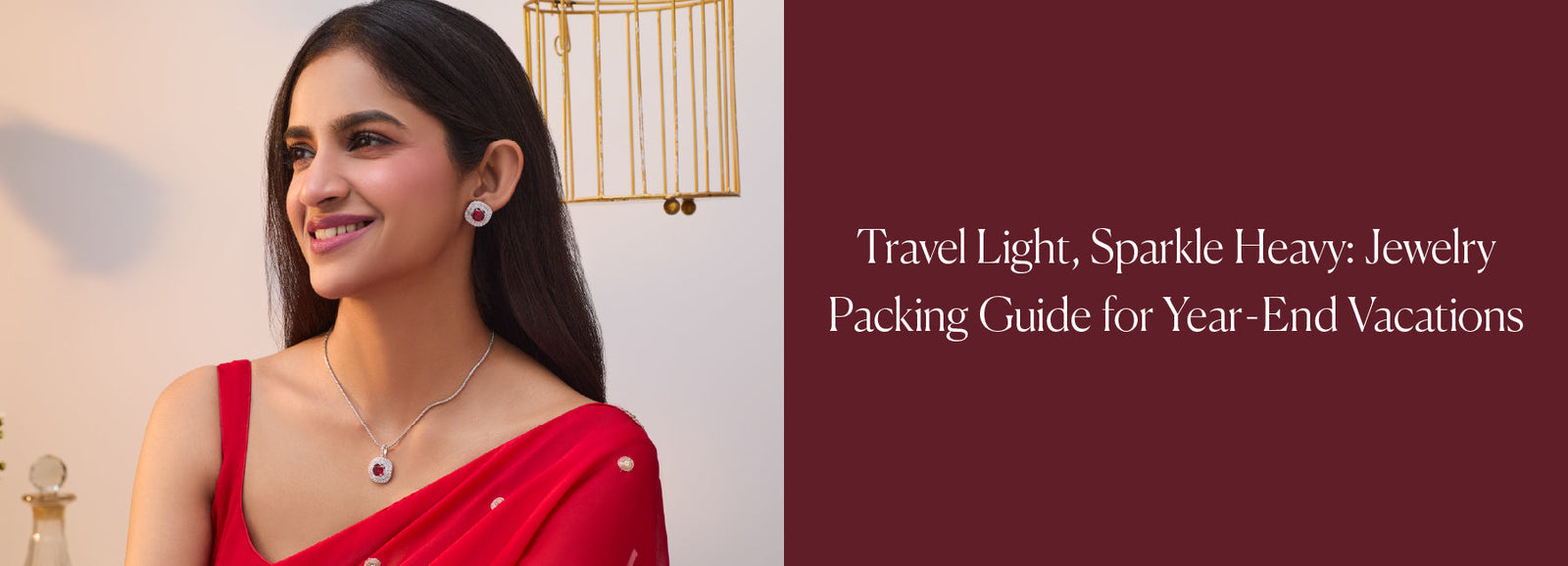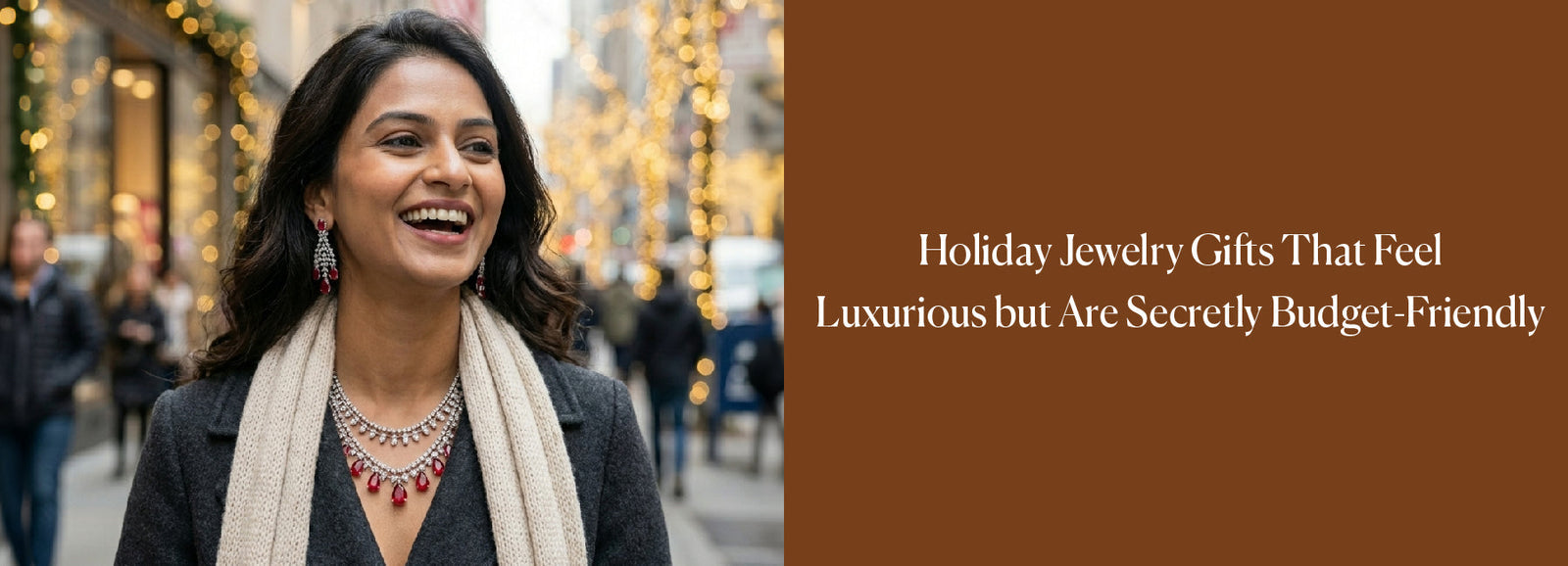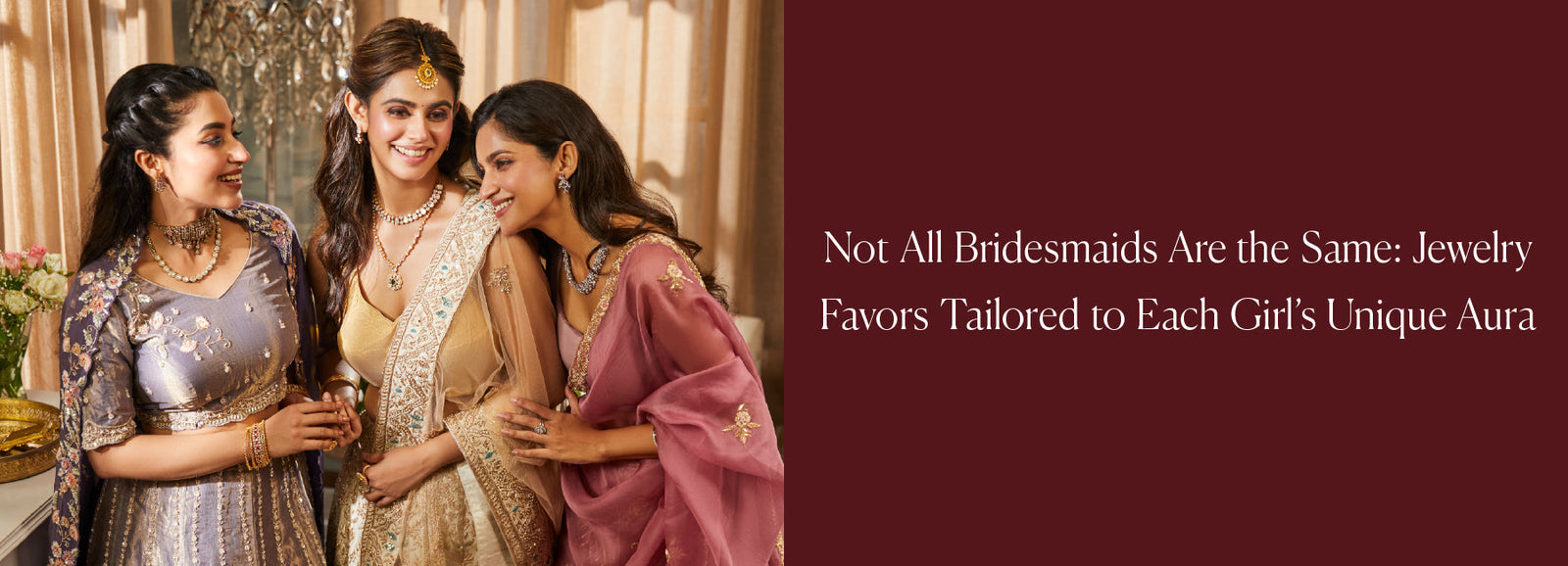Ever wondered why Indian jewelry feels so alive? It’s likely because it carries stories within every bead and motif. The blueprint of Indian ornaments existed before trend forecasts and Instagram grids in the form of verses, rituals and epics. Traditional Indian jewelry has its mention in the hymns of the Vedas to the sweeping dramas of the Ramayana and the Mahabharata. It was status and emotion worn on the skin but rooted in the soul.
Let’s open those ancient pages together and see what they reveal about the ornaments we still love today.
THE VEDIC SPARK: ORNAMENTS AS ORDER, BLESSING, AND POWER
The Vedas which represent some of the earliest sacred texts subtly shaped the grammar of traditional Indian jewelry. You’ll find references to hiranya (gold) as a symbol of purity and radiance. Gold was considered precious and auspicious as people believed it brought fortune & blessings from the divine. The earliest written records about nishka (a gold ornament or coin-disc that people wore around their necks) hint at how ornament and wealth intertwined.
The Vedic rituals established that jewelry served as a symbol to mark important life events such as marriage or harvest festivals and also served as a spiritual armor. People consider ornaments as protective charms which include talismans, bangles, waist-belts that protect the life force at the navel and earrings that maintain the energy equilibrium. The impulse to wear beauty with purpose still echoes in bridal jewelry setsv and ceremonial pieces today.
THE EPICS: RAMAYANA & MAHABHARATA AS STYLE ARCHIVES (AND EMOTIONAL MAPS)
The great epics employ jewelry as a narrative tool to advance their stories. Sita Ma gives Lord Hanuman her Chudamani (hair ornament) as a token of recognition for Lord Rama and to prove her identity when he finds her in Lanka. The Mahabharata also presents ornaments as indicators of social position and pivotal moments in the story since they represent gifts made during alliance formation and victory jewels that mark the restoration of dharma.
Royal authority and heroism were reflected through crowns, armlets or long necklace sets which were worn by both men and women. Ornaments created emotional effects by expressing joy at coronations, grief in exile or devotion in vows.
SANGAM & CLASSICAL POETRY: SENSUAL DETAILS AND LIVED STYLE
The ancient Sangam poetry of southern regions provides detailed descriptions of sensory experiences. Poets describe how pearl necklaces feel cool against the collarbone while anklets produce sounds in moonlit courtyards and how wet hair meets gold chains after river baths. Jewelry appears in the rhythms of everyday life—farmers’ brides in silver toe-rings, dancers in temple necklaces or queens in polki jewelry that mirror jasmine buds.
The classical Sanskrit poetry of Kalidasa and other renowned poets depicts seasonal moods through ornaments by showing how kundan necklace sets reflect springtime illumination and how enamel jewelry forms miniature gardens on metal surfaces. These poems establish the emotional significance of jewelry because it serves to express longing, reunion as well as celebration and transitional life events.
SYMBOLISM: MORE THAN A MOTIF
Ancient texts treat motifs like mantras. They refer to as compact symbols loaded with significance:
> Lotus: purity and spiritual awakening.
> Peacock: beauty, joy and protection.
> Fish & Makara: fertility and abundance.
> Conch & Chakra: victory, cosmic order and divine presence.
> Sun & Moon: vitality and serenity in balance.
These are worn close to pulse points and were thought to influence one’s inner climate. Today’s temple jewelry and antique pieces preserve these forms with remarkable fidelity.
JEWELRY AS SOCIAL SIGNATURES
Ancient literature reads jewelry like a biography. Marital status in the mangalsutra; region coded in nose pin shapes; profession or clan hinted through specific bangles and head accessories. Jewelry gifts functioned as indicators of both relationships and alliances between people. The practice of ornament removal or transition to simple jewelry pieces also served as a mourning code.
Indian jewelry continues to hold meaning because of this reason. Your modern jewelry choices between office-friendly hoop earrings or wedding heritage chokers reveal both your current mood and important life events.
JEWELRY AS DEVOTION: THE DIVINE AESTHETIC
Temples and religious texts depict deities wearing crowns, earrings or necklaces which serve as both sacred offerings and symbolic representations. The act of ornamentation transforms into seva which represents the service of beauty. The devotional aesthetic influenced bridal fashion by making brides resemble goddesses through their radiant appearance with auspicious gold, pearls and gemstones that symbolize prosperity and protection.
YOUR MINI STYLING GUIDE (ROOTED IN ANCIENT TEXTS)
> The combination of a gold-finish choker necklace with a sleek kamarbandh/waistbelt over a silk sari creates festive grace which draws from Vedic and temple traditions. The addition of lotus studs will create an instant auspicious aura.
>Choose a pastel enamel pendant necklace layered with a delicate chain for romantic evenings or classical poetry date. Keep your makeup dewy, eyes soft and let the jewelry piece be the center stage.
>A signature nose pin or talismanic charm that says “you,” worn with crisp shirts or kurtas for everyday identity (social codes, reimagined).
WHY THIS MATTERS
The jewelry you wear represents more than just metal and stones because it carries both literature, ethics and festive traditions. The Vedas impart auspicious knowledge; the epics present identity and devotional symbols transform beauty into religious worship.
When you put on jewelry ask yourself which narrative you wish to express at that moment. Your choice may include the consistent shine of gold, the delicate touch of enamel or the temple-inspired powerful style of antique designs. Every design choice you make connects you to a timeless discussion which first began thousands of years ago while maintaining its sunlight beauty.
QUICK RECAP
> Vedas: Jewelry as auspicious order and talismanic power.
> Epics: Ornaments as identity and emotional cues.
> Poetry: Lived-in details. Pearls, enamel, and moods of the seasons.
> Motifs & Craft: Lotus, peacock, Kundan, Meenakari and temple work are all still thriving.
> Today: Comfort-forward silhouettes carry ancient symbolism into modern wardrobes.
In short: Indian jewelry is a living archive. The texts gave it language, and you give it voice. Wear it well










